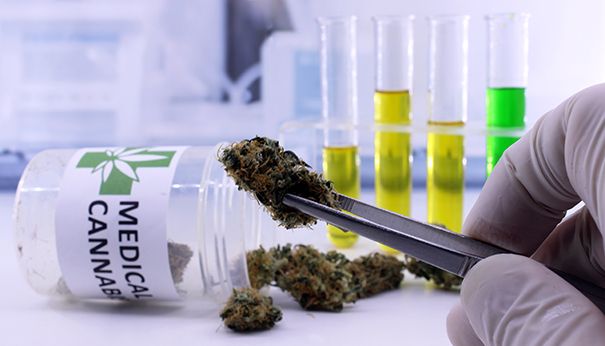
The government just made 5 mg of THC the standard dose for medical cannabis research
Picture over
The US National Institute on Drug Abuse (NIDA) has set a standard dose for THC, a decision that will help medical cannabis researchers compare the results of new clinical studies.
In March last year, NIDA released a notice asking scientists and researchers for advice on how to create an optimal standard dose of THC. At the time, the agency wrote: “Research is becoming increasingly critical to determine both the adverse health effects and the therapeutic potential of cannabis and its components. Given that a perfect measure may not be achieved at this time, NIDA continues to believe that a standard dose would improve the measurement of results in terms of exposure. and thus could inform public health policies and strategies related to cannabis use. ”
NIDA gave interested parties the opportunity to provide feedback on a recommended standard dose until May 1, 2020. In May of this year, a full year after the public comment phase had ended, the agency finally announced its decision. As of now, the federal standard dose for THC is 5 milligrams. In a new notice, NIDA advises researchers that they must now measure and report the results of all cannabis research using this standard unit of measure.
Researchers have been conducting clinical studies of THC and cannabis for more than fifty years, but without an official standard dose, each individual research team had to develop their own measurements for weeds. In many studies, researchers only tracked the total number of joints or the weight of the flowers the subjects smoked. However, each individual weed strain has unique levels of THC and other cannabinoids, making it difficult to draw serious conclusions from these vague measurements.
In a recent federal announcement, NIDA stated that inconsistencies in measuring and reporting THC levels “were a major limitation in studies of cannabis use and made it difficult to compare results between studies.” To address this issue, the agency decided that “standardized measurement of THC in cannabis products is needed to advance research by ensuring better comparability between studies of both side effects and potential medicinal uses”.
Even so, NIDA warns that “the same amount of THC can have different effects depending on the route of administration, other product ingredients, genetic makeup and metabolic factors, previous exposure to cannabis and other factors.” And since the agency hasn’t set a standard dose for CBD or other cannabinoids, it will continue to be difficult for researchers to compare studies using different flower strains or full-spectrum extracts.
The introduction of this new standard dose is not intended to limit the amount of THC researchers can use in cannabis clinical research. “In fact, investigators are free to use more or less than 5 mg of THC for their study,” NIDA clarified in the press release. “However, for applicable studies, the investigators must report the amount of THC using the standard unit. Investigators may also report the amount of THC in other units (e.g. milligrams) if necessary. “
The federal government still regards cannabis as a List I drug with no medicinal use, but NIDA director Nora Volkow has been working to create regulations like this new standard dose to help researchers better understand this complicated plant.
“Although cannabis is still an illegal substance in the US, the expanded legalization by states means that we need to develop a knowledge base that can help states develop strategies to minimize the risk of cannabis exposure, such as limiting THC levels. Content of cannabis products, ”Volkow wrote in a comment published in the Addiction Journal last year.

Post a comment: